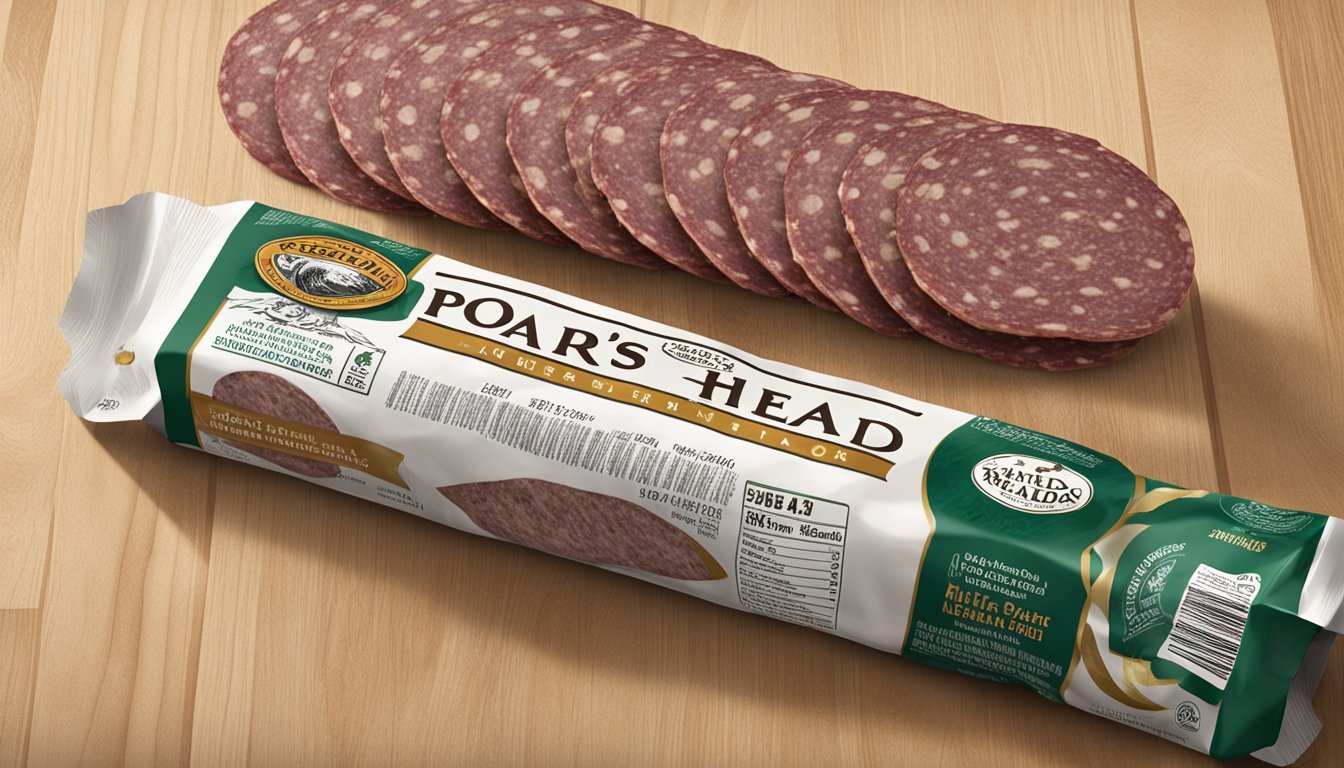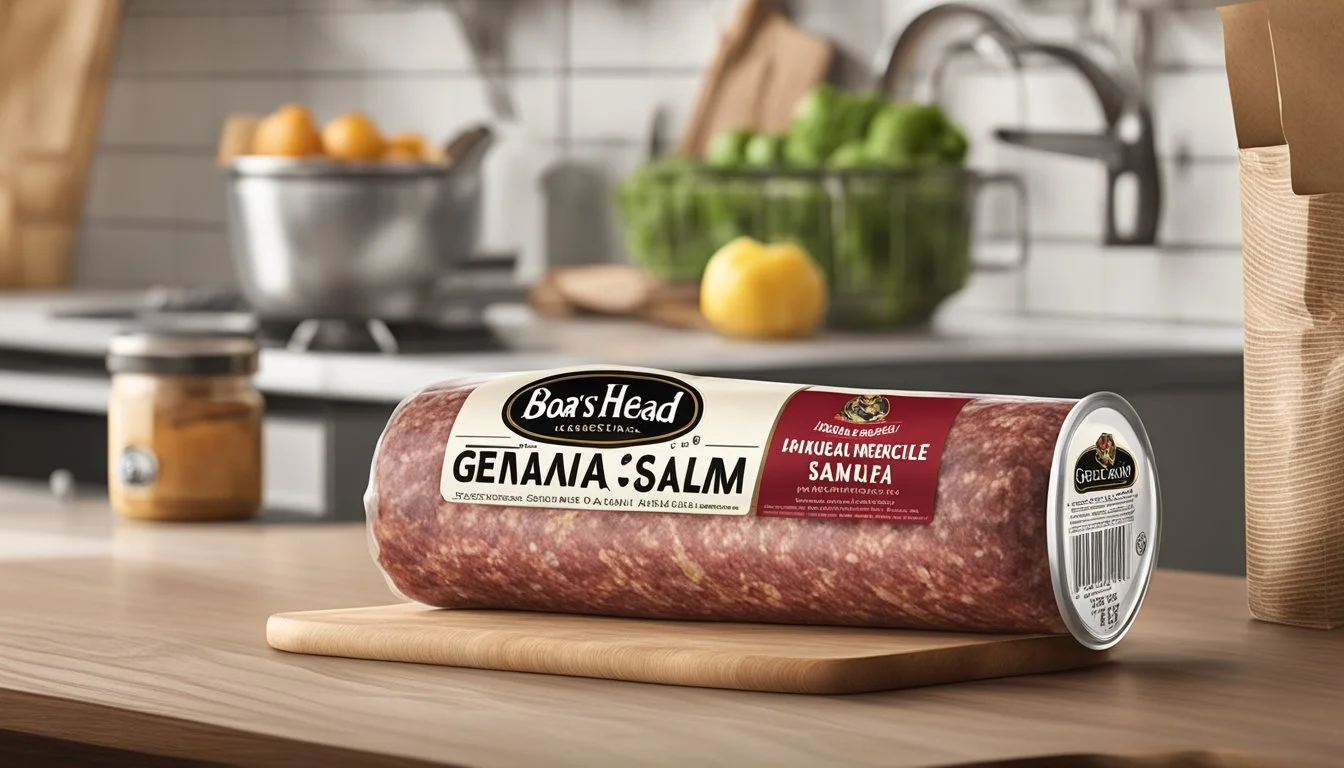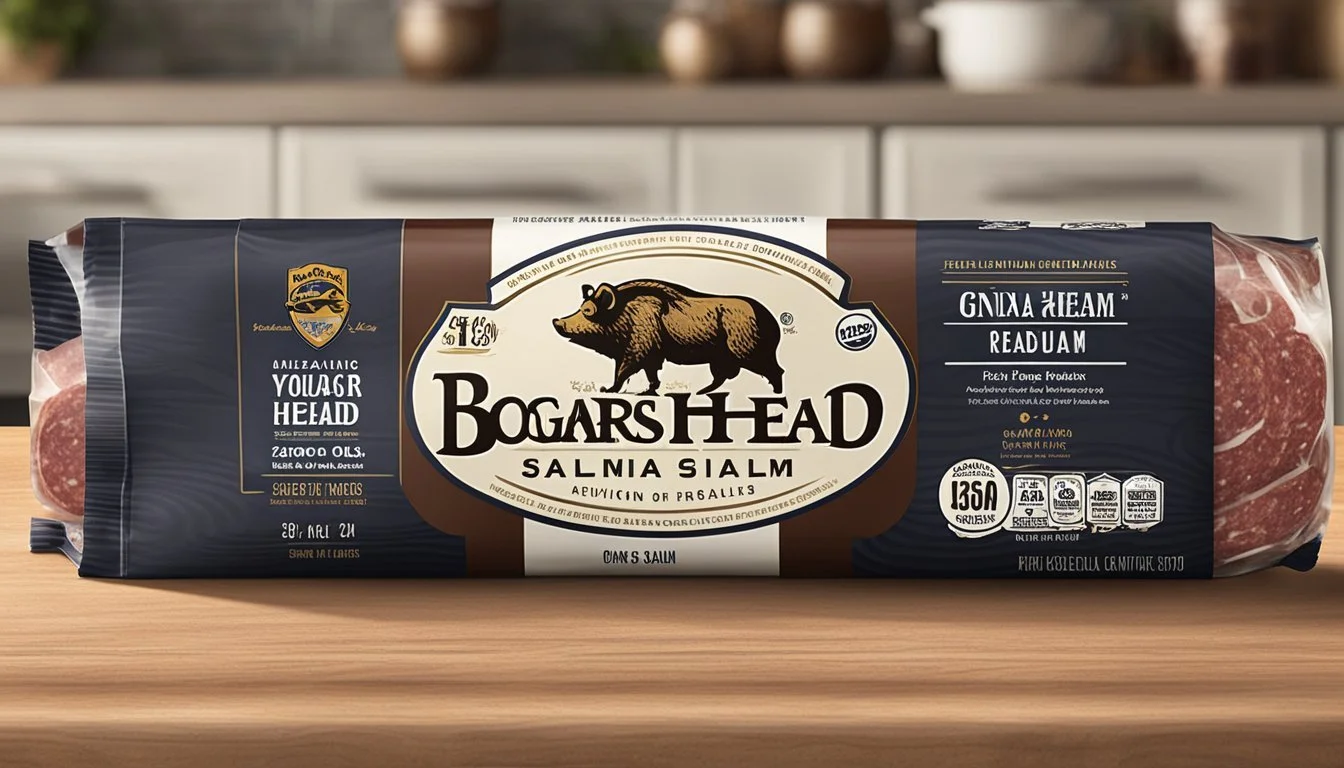How Long Does Boar's Head Genoa Salami Last?
Shelf Life and Storage Tips
When it comes to the shelf life of Boar's Head Genoa Salami, consumers can expect a robust and flavorful cold cut that balances both quality and durability. As a cured meat, Genoa salami inherently lasts longer than many other deli products. Unopened and stored correctly, Boar's Head Genoa Salami can maintain its quality for several weeks at room temperature and for a few months when refrigerated. This longevity is attributed to the traditional curing process, which infuses the pork with a blend of peppercorns and other spices that act as natural preservatives.
Once opened, the shelf life shortens significantly; however, proper storage can still ensure the salami remains fresh for subsequent use. It's suggested to refrigerate the sliced salami and consume it within three weeks for optimal taste and safety. Consumers should also pay attention to the best-by date typically marked on the packaging, as it serves as a reliable guideline for consumption. To preserve the quality, the cut end should be wrapped in plastic wrap before refrigeration.
In addition to refrigeration, those looking to extend the shelf life of their Genoa Salami can opt for freezing, which can be an effective method for long-term storage. It's important to wrap the meat appropriately in aluminum foil or a freezer bag to safeguard its flavor and texture. Thawing the salami in the refrigerator overnight before consumption will yield the best results. By following these storage tips, consumers can enjoy the full-bodied flavor of Boar's Head Genoa Salami with minimal waste and maximum satisfaction.
Understanding Genoa Salami
Genoa salami is a variety of salami traditionally made from pork, though some recipes may include beef. This Italian specialty is known for its robust flavor, which is achieved through a careful balance of salt, garlic, wine, and peppercorns among other ingredients. The meat is cured, a process that not only imparts deep flavor but also preserves the salami, allowing it to be stored for extended periods.
Boar's Head Genoa Salami is characterized by its fine blend of hand-selected spices and hand-crafted attention to quality. The salami embraces a gluten-free and milk-free recipe, catering to a wide range of dietary preferences. Adhering to a commitment of no fillers, Boar's Head ensures no MSG added.
The product's composition includes a rich content of protein, making it a nourishing choice for a variety of meals. Within its ingredient list, one will find the presence of fat which contributes to the signature texture and taste.
When discussing dry Genoa salami, it's indicative of the salami's low moisture content which allows it to last longer than other types of salami that may have higher water content. The manufacturing process is often a blend of tradition and precision, resulting in a consistent product that can be enjoyed in many culinary situations.
In summary, Boar's Head Genoa Salami delivers a classic Italian experience with a focus on quality ingredients and traditional processes, offering a slice of Mediterranean flavor in every bite.
Boar's Head Genoa Salami Specifics
Boar's Head Genoa Salami is well-regarded for its traditional preparation and commitment to quality, catered to meet the preferences of conscious consumers.
Brand Quality
Boar's Head maintains a reputation for producing high-quality deli products, and their Genoa Salami is no exception. This salami is hand-crafted with a time-honored approach that echoes century-old Salumiere traditions. The blend of premium pork with peppercorns ensures a robust flavor profile that is consistently delivered in Boar's Head Genoa Salami.
Ingredient Purity
The ingredients in Boar's Head Genoa Salami adhere to a standard of purity that the brand champions. Their salami contains:
No caramel color
Meat from animals raised without added hormones
Boar's Head is attentive to customer preferences for natural and straightforward ingredients, ensuring that the Genoa Salami aligns with the brand's commitment to ingredient transparency and purity.
Shelf Life and Storage
Proper food storage is crucial to extending the shelf life of Boar's Head Genoa Salami and preventing spoilage. This section will guide one through optimal storage methods to maintain the quality and safety of the salami.
Refrigerated Shelf Life
Boar's Head Genoa Salami, when stored in the refrigerator, maintains its quality if unused and unopened for several months. Once opened, it is best to consume the salami within three weeks to ensure freshness and prevent mold growth. Always keep the salami in the refrigerator, wrapped securely to avoid exposure to air, which can increase the risk of spoilage.
Key points for refrigerator storage:
Store unopened and unopened: Several months
Once opened: Consume within three weeks
Freezer Storage
For long-term storage, Boar's Head Genoa Salami can be frozen. Wrap the salami tightly in aluminum foil or place it in a freezer bag before freezing to protect it from freezer burn. When stored properly in the freezer, the salami can be used for up to six months. To use, thaw the salami in the refrigerator overnight to preserve texture and flavor.
Key points for freezer storage:
Protect with foil or freezer bag
Freezer shelf life: Up to six months
Thaw in refrigerator before use
Salami Preservation Techniques
Preserving Genoa salami involves several methods aimed at maintaining its quality and extending shelf life. These techniques focus on controlling moisture, preventing oxidation, and ensuring the meat remains safe for consumption.
Curing is a primary technique in which salt, and sometimes nitrites, are used to draw out moisture, inhibiting bacterial growth. Genoa salami typically undergoes a dry cure where a mixture of salt and other ingredients are applied to the surface. This process also contributes to the development of the salami's unique flavor.
Storage climate plays a crucial role in keeping the salami fresh. To prevent the meat from spoiling, it should be stored in a cool, well-ventilated area with a stable temperature before opening. Once cut, wrapping the end of the salami with plastic wrap before refrigerating is recommended.
Storage State Recommended Action Before Opening Store in a cool, dry place After Opening Refrigerate in airtight conditions
To further combat oxidation, an airtight container or tightly sealed plastic is advisable for refrigeration. When opting for long-term storage, freezing is an option; however, wrap the salami in aluminum foil or a freezer bag and thaw in the fridge overnight before use.
For those who prefer a smoky flavor, smoke curing can be applied to Genoa salami, adding another preservation layer. The drying process after smoking must be controlled to ensure the salami reaches the desired level of dryness without becoming too hard.
Through these salami preservation techniques, one ensures that Genoa salami retains its quality. It is crucial to monitor the meat regularly and consume it within the recommended timeframes to enjoy its best flavor.
Identifying Spoilage
When dealing with Boar's Head Genoa Salami, acknowledging the signs of spoilage is crucial for food safety. Even though Genoa salami is a cured meat, which provides it a longer shelf life than many fresh meats, it is still perishable and can eventually spoil.
Visual Changes: The consumer should inspect the salami for any discoloration or mold. If spots that are green, black, or white are observed on the salami's surface, it is an indicator of spoilage.
Texture: A slimy or sticky texture is a noticeable warning sign. Fresh salami should feel firm to the touch, not slick or gooey.
Smell: One should trust their senses — if the salami emits a sour or rancid smell, it is an indication that it is no longer fit for consumption.
Taste: If the salami passes the visual and smell tests, a tiny taste can confirm its quality. Any sour or unpleasant flavors are a clear signal of spoilage.
To prevent the potential for food poisoning, it is imperative to discard any salami that exhibits any of these spoilage signs. It's better to err on the side of caution with food items that are high-risk. Genoa salami, when consumed past its prime, may carry bacteria harmful to one's health.
By being vigilant and routinely checking the salami before consumption, consumers can enjoy their product confidently, knowing they are adhering to safe eating practices.
Consumption Methods
When incorporating Boar's Head Genoa Salami into meals, one can either feature it in sandwiches or enjoy it as a standalone item, each offering a distinct taste experience.
In Sandwiches
Salami, particularly Genoa salami, is a staple deli meat known for its robust and slightly spicy flavor profile, making it an ideal ingredient for sandwiches. One can layer slices of the salami atop fresh bread, accompanied by cheese, vegetables, and condiments. Here are suggested pairings:
Bread: Baguette, ciabatta, or rye
Cheese: Provolone, mozzarella, or Swiss
Vegetables: Lettuce, tomato, onion
Condiments: Mustard, mayonnaise, or Italian dressing
As a Standalone
Boar's Head Genoa Salami can also be savored as a standalone treat, often featured on charcuterie boards or as a protein-rich snack. Its distinct flavor is best enjoyed when the salami is sliced thinly. As a standalone, it pairs well with:
Cheese: Aged cheddar or gouda
Fruits: Grapes or figs
Beverages: Full-bodied red wine or a hoppy beer
To maintain freshness, it's essential to store the salami properly, whether consumed in sandwiches or on its own.
Health and Nutrition
Boar’s Head Genoa Salami is a popular delicatessen item known for its robust flavor. It is hand-crafted with a blend of pork and peppercorns, adhering to traditional salumiere methods. This product provides an ample amount of protein, an essential nutrient for muscle repair and growth.
Nutritional Elements:
Protein content: Approximately 12g per serving, which is about 25% of the daily recommended intake.
Gluten-Free: Suitable for individuals with gluten sensitivities or celiac disease.
Milk-Free: Does not contain milk, making it a suitable option for those with lactose intolerance or dairy allergies.
The salami also contains sodium, a mineral that is essential for bodily functions but should be consumed in moderation. The sodium content in Boar’s Head Genoa Salami contributes robustly to its overall flavor profile.
Nutrient Content Protein 12g per serving Iron 4% of the daily value Sodium Varies (check label) Gluten free Yes Milk free Yes
It is low in iron, providing just 4% of the daily value. When incorporating Boar’s Head Genoa Salami into a diet, consumers should be mindful of the iron and sodium content, particularly if they are managing dietary restrictions or health conditions requiring limited sodium intake.
Culinary Uses
Boar's Head Genoa salami is valued for its delicate flavor profile and versatility in recipes. This salami can enhance various dishes with its blend of spices.
Foodservice Recipe
In foodservice settings, Genoa salami is a key ingredient for classic Italian sandwiches. It pairs well with Provolone cheese, lettuce, tomato, and a drizzle of oil and vinegar. Chefs can also dice the salami to add a savory depth to pasta salads or incorporate it into gourmet pizza toppings, (What wine goes well with pizza toppings?) playing on its subtle garlic notes and robust seasoning.
Ingredients:
Boar's Head Genoa salami, sliced
Artisan bread or hoagie roll
Provolone cheese
Fresh lettuce and tomato slices
Oil and vinegar
Layer slices of Genoa salami onto the bread.
Add cheese, lettuce, and tomato.
Drizzle with oil and vinegar before serving.
Home Cooking Tips
For the home cook, this salami is a staple that can easily elevate a meal with its rich flavoring. It's advisable to slice Genoa salami thinly to fully appreciate its blend of spices in cold cuts or antipasto platters. To bring out the savory elements, it can be incorporated into a frittata or quiche, (What wine goes well with quiche?) giving a flavor boost to these simple egg dishes.
Recommendations:
Store salami in a cool, dry place before slicing.
Serve at room temperature to enhance flavor.
Experiment with the salami in a variety of dishes, such as adding it to stuffed chicken breasts or wrapping it around asparagus spears for a flavorful twist.
Understanding Food Additives
When examining the shelf life of Boar's Head Genoa Salami, it's crucial to understand the role of food additives. These are substances added to food to maintain or improve safety, freshness, taste, texture, or appearance.
Sodium nitrite is commonly utilized as a preservative in curing meats like salami. It inhibits the growth of bacteria, which extends shelf life and also imparts the characteristic pink color to cured meats (What wine goes well with cured meats?).
Dextrose, a form of sugar, serves multiple purposes. It supports the fermentation process by feeding the lactic acid starter culture. This culture is essential in salami production because it lowers the pH, creating an acidic environment where harmful bacteria struggle to thrive.
Sugar, while contributing to flavor, also helps in the fermentation process, similar to dextrose, by ensuring that the lactic acid bacteria have enough fuel to do their job.
Citric acid may be used as a flavoring agent but is also a preservative that can enhance the tangy taste and provide another hurdle for spoilage organisms.
The list below summarizes the functions of these additives:
Preservatives: Extend shelf life by preventing spoilage and bacteria growth.
Flavorings: Enhance or maintain the desired taste.
Fermentation Aids: Support the growth of beneficial bacteria that aid in preservation and flavor.
By understanding these additives, consumers can make informed decisions about the food they purchase and consume. It is also important to note that all additives used in food products must adhere to strict safety standards set by food safety authorities.









